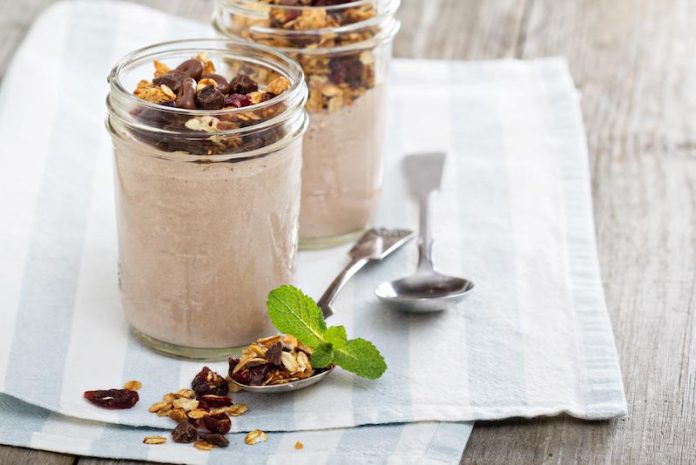When you shop for protein powders, you’ll notice that the ingredient label can vary quite a bit. Thanks to creative (and often misleading) marketing tactics, sometimes it’s difficult to know when extra ingredients are actually beneficial or if less is more.
After reading this article, you’ll know the ins and outs of how whey protein is made, why processing is important, and how unnecessary ingredients impact quality. Next time you shop for a protein powder, you can read the label with more confidence and less confusion.
What is a Single Ingredient Protein?
It’s pretty much exactly how it sounds. A single ingredient protein only has one ingredient – protein. In other words, these protein powders are free of additives and fillers. They have no sweeteners, artificial flavors, or artificial colors. It’s just protein.
The Problem with Fillers and Additives
Extra ingredients don’t always mean a product is less healthy or lower quality. Brands may use them to enhance the texture, mixability, shelf life, or flavor of the protein.
“Fillers” are any ingredient that does not naturally occur in the original protein source. Here are some common fillers and additives found in protein powders:
- Thickeners
- Milk solids
- Artificial sweeteners
- Dextrins
- Vegetable oils
- Added fiber
While many of these are harmless in small quantities, there are times when additives and fillers cause problems. For example, people with sensitive digestive systems may experience adverse reactions to certain fillers like added fiber and artificial sweeteners.
Other people may notice these ingredients trigger headaches, mood changes, or even weight gain. Finally, long-term use of some types of fillers can disrupt gut health, leading to health problems down the road.
How Whey Protein is Processed
The process to create whey protein is fairly straightforward. It’s actually made the same way as cheese.
Whey is the watery part of milk. It’s most often separated from casein using heat or an enzyme that causes the milk to curdle. Casein becomes solid and is used later for cheese or other products.
Whey goes on to be pasteurized and dried to become whey concentrate. Whey isolate goes through another step of processing to further reduce carbohydrates, fat, and lactose before the final drying step.
Although these steps are standard for all protein powders, there are ways in which manufacturing and processing affect quality.
Of course, this starts with the source of the dairy where the whey is coming from. Grass-fed cows produce dairy that is higher in omega-3 fatty acids and lower in saturated fats than dairy from feed-lot cows. This translates to the final product.
Second, small details in the separating and pasteurizing process impact quality. A method called “cold processing” yields a higher quality protein powder.
What is Cold Processed Whey Protein
 In the United States, whey must be pasteurized before it is further processed into protein powder and then sold.
In the United States, whey must be pasteurized before it is further processed into protein powder and then sold.
The process of pasteurization exposes the whey to heat to kill bacteria. However, heat can also denature protein. Although this doesn’t ruin the product, it does make the protein slightly less bioavailable. In other words, your body might not use the protein as efficiently.
Here’s where processing affects quality. Many brands pasteurize their whey at 200 degrees Fahrenheit. However, the FDA minimum is only 160 degrees to pasteurize certain dairy products. This temperature difference may seem small, but it does change the product.
Cold processed whey protein powders like the grass-fed whey protein from Naked Nutrition are pasteurized at the minimum temperature. This way, they meet safety standards while retaining protein structure, as well as other nutrients.
Benefits of Cold Processed Protein
Cold processed protein is as minimally processed as it gets, which is important because whey contains much more than just protein. Cold processing preserves immuno-supporting nutrients, vitamins, minerals, and the amino acid profile.
The final product is a high-quality, bioavailable protein in its purest form. Here are some specific benefits of cold processed protein:
- Better branch-chained amino acid bioavailability
- More omega-3 fatty acids
- More conjugated linoleic acid (CLA)
- Immunoglobulins remain intact
Final Thoughts
Most of the time, it’s safe to assume that less is not always more when it comes to protein powder.
Fillers and additives are used to alter the taste, texture, mixability, and shelf life of the protein. Although these ingredients are generally safe, they may cause issues for people with a sensitive digestive system. Using too many of these ingredients can sometimes “fluff” the product, leaving you with less of the most important ingredient – high-quality protein.
Quality doesn’t stop at the ingredients list. The method of processing impacts not only the quality of whey protein, but how well your body digests and utilizes it. Cold processing minimizes heat exposure and helps keep protein intact during processing. This preserves nutrition and the bioavailability of the protein.

